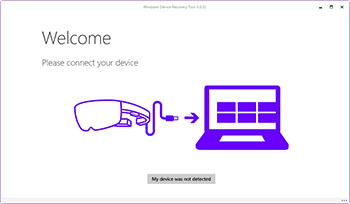Posey's Tips & Tricks
Reconstructing a Corrupted Windows Phone OS
How do you factory reset a Windows device when the factory reset feature is missing?
Over the last six weeks, I have been spending a lot of time working on a series of Exchange 2016 training videos. Being that mobile device access is such a huge part of Exchange Server, I wanted to be sure and create some videos that showed how Exchange 2016's mobile device support works. Of course, I didn't want to attach my own personal smartphone to an Exchange 2016 lab deployment. I used to use my own phone whenever I had to write about mobile messaging, but it became too big of a pain to reset the phone and put it back to normal each time. As such, I got my hands on a few cheap Windows phones that I use in my lab.
Normally, I write about Windows Phone on a somewhat regular basis. But for whatever reason, I hadn't touched my lab phones in about six months. When I powered them up, I realized that they were still running a prerelease build of the Windows 10 operating system. I was going to have to bring the phones up to date before I would be able to use them for my video project.
I have been using Windows Phone for years, and have updated my devices many times. It has never been an issue. This time, however, I ran into problems with an update. I'm not really sure what happened, but when Windows finished installing this particular update, half of the phone's features were missing. Cortana was gone. Settings was gone. Even the Windows Store was gone. I frantically rebooted the phone, but it didn't do any good.
My next thought was to try doing a hard reset. A hard reset puts the phone back into its original factory configuration. Unfortunately, this means that the device has to be set up again, but I really didn't know what else to do. The normal way of resetting a Windows Phone is to go into Settings, and then tap About, followed by Reset Your Phone. Unfortunately, this wasn't an option, because the Settings app was gone.
As I pondered what to do next, I remembered that Windows Phone includes a shortcut to the Settings app. I powered up the phone, cleared the lock screen, and then swiped my finger down from the top of the screen. There in all its glory was the Settings button. I gleefully tapped Settings, only to see the weirdest message that I have ever seen displayed on a Windows Phone. I can't remember the exact wording, but it basically said that I needed to go into the Windows Store to download the Settings app. Keep in mind that Settings is a part of the operating system -- it isn't an app that you can get from the store. Further complicating the matter was that the Store app was also missing from my phone.
As I thought about how to solve my problem, I remembered reading something a while back about using the phone's hardware buttons to reset the phone. After a quick Web search, I found that I could reset the phone by turning it off, and holding the down volume button as I powered the device back on. When the phone vibrates, you must release the power button, but continue to hold the volume down button.
Sure enough, this technique reset the phone to its factory defaults. When the OS loaded, I answered the various setup prompts, and connected to my Wi-Fi network. After Setup completed, however, the missing items were nowhere to be found. Now, I was getting concerned.
I spent the next couple of hours researching the problem, and then discovered the Windows Device Recovery Tool. This tool, which you can see in Figure 1, is able to rebuild the phone's operating system.
 [Click on image for larger view.] Figure 1.
[Click on image for larger view.] Figure 1.
Not only does this tool reset the OS, but it reinstalls the device operating system. Within half an hour, my phone was back to normal. Incidentally, the latest version of the Windows Device Recovery Tool works for more than just Windows Phones. The utility also has built-in support for HoloLens.
About the Author
Brien Posey is a 22-time Microsoft MVP with decades of IT experience. As a freelance writer, Posey has written thousands of articles and contributed to several dozen books on a wide variety of IT topics. Prior to going freelance, Posey was a CIO for a national chain of hospitals and health care facilities. He has also served as a network administrator for some of the country's largest insurance companies and for the Department of Defense at Fort Knox. In addition to his continued work in IT, Posey has spent the last several years actively training as a commercial scientist-astronaut candidate in preparation to fly on a mission to study polar mesospheric clouds from space. You can follow his spaceflight training on his Web site.